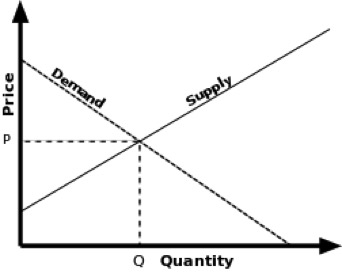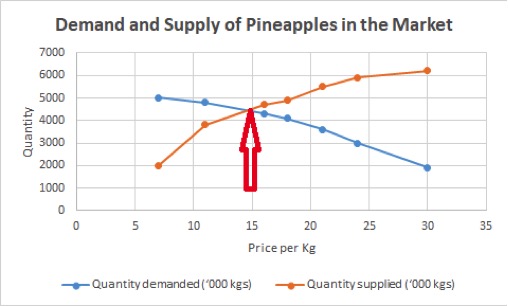 What Is Equilibrium?
What Is Equilibrium?
Definition: Equilibrium is a term whose application is broad. However, the standard definition of equilibrium is a state of balance or calmness where there is no conflict between opposing forces. In this article, we will focus on equilibrium as used in chemical reactions and in economics.
Equilibrium in Chemical Reactions
In a chemical reaction, materials interact with each other and at the end of which they produce products. However, there are different types of reactions. There are reactions that proceed to completion such that all reactants convert products. Another type of reactions is the one that reverses, where products revert to the individual reactants. The third type of reactions is those that do not proceed to completion. These are reactions where reactants do not fully convert to products such that there are products and reactants present even as time continues to change.
Typically, the rate of formation of products slows down incrementally as the amount of reactants reduces. This process goes on to a point where reactants are still present but there is no further formation of products. At such a point, we say that the reaction is in equilibrium. Chemical equilibrium is the same whether the reaction is forward or backward.
Equilibrium in Economics
The concept of equilibrium is crucial in economics. Particularly, it is the balance that the market attains due to the conflict between the forces of demand and supply. In a market, there are producers and consumers whose objectives are unique. The producers supply goods and services while the consumers demand products and services based on their needs and wants.
On the one hand, consumers demand less of a product or service when the price is high. If the price begins to go down, the consumers begin to demand more of the products and services. However, this only happens if all other things (like changes in income, changes in tastes and preferences) remain the same. This is why the graph that plots demand in the market (the demand curve) has a negative gradient.
On the contrary, suppliers (producers) avail more products and services in the market when the price goes up. This is because the higher price implies higher profits. If the prices are low, few suppliers will be motivated to supply the products that consumers want. As a result, the supply curve has a positive gradient.
However, there reaches a point where the forces of demand and supply balance, which is called the point of market equilibrium. This is where producers are willing to supply the exact amount of products and services that consumers want at the prevailing market price. At this point, the demand and supply curve cross each other.

Equilibrium Example
The table below shows the demand and supply schedule of Pineapples at different prices.
| Price of Pineapples (per kg) | Quantity demanded (‘000 kgs) | Quantity supplied (‘000 kgs) |
| 7 | 5000 | 2000 |
| 11 | 4800 | 3800 |
| 16 | 4300 | 4700 |
| 18 | 4100 | 4900 |
| 21 | 3600 | 5500 |
| 24 | 3000 | 5900 |
| 30 | 1900 | 6200 |
From the table, it is clear that at the price of $7 per kilogram, consumers buy many pineapples but suppliers are willing to supply just a few kilograms. At the opposite end, at $30 per kilogram, suppliers are willing to avail over six tons of pineapples but consumers can only buy one ton. Presented on a graph, this information would look like this.

The chart shows how the demand curve and the supply curve behave at every price point. At $7, the demand quantity is at 5,000,000 kgs while the quantity supplied is 2,000,000 kgs. As such, there is a shortage of 3 tons. However, the shortage begins to thin as the price goes up. On the other hand, the quantity demanded at $30 is 1,000,000 kgs while the quantity supplied is 6,200,000 kgs. Clearly, there is a surplus of 5.2 tons. However, the surplus reduces as the price begins to fall.
Apparently, the decrease in shortage and the decrease in surplus seem to go on until a certain point where demand and supply is equal (where the red arrow is pointing). This is the point of equilibrium.
